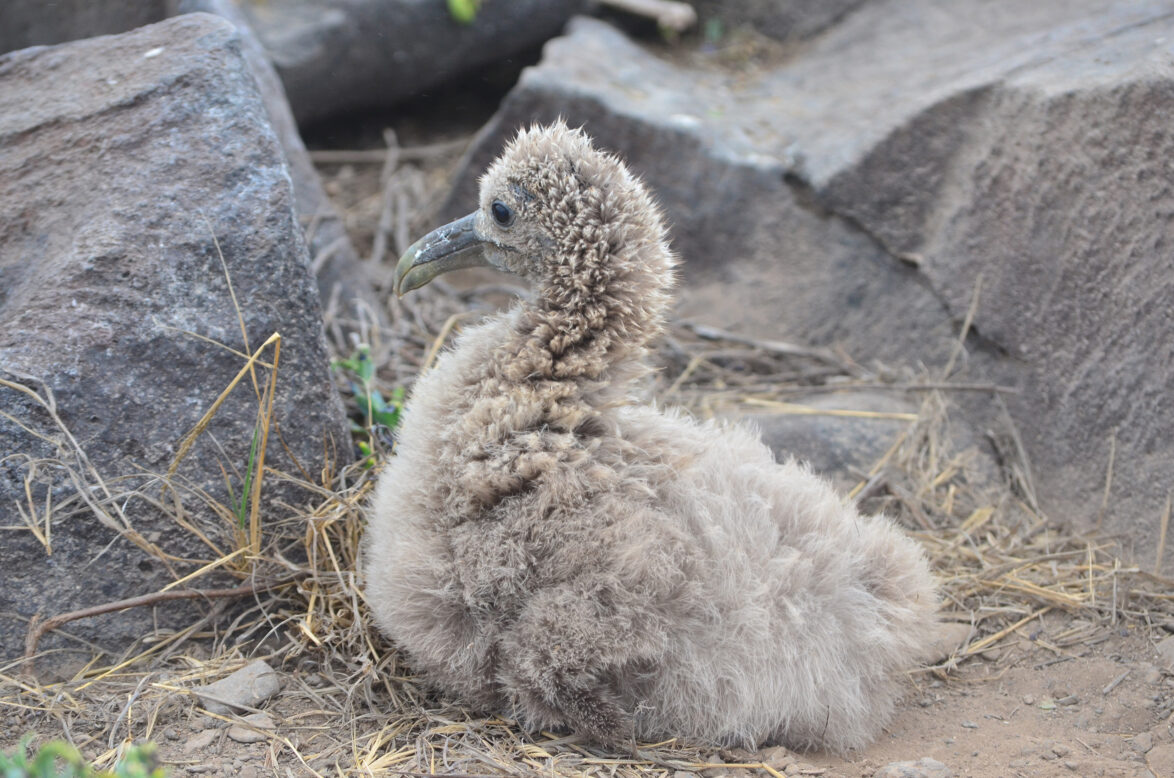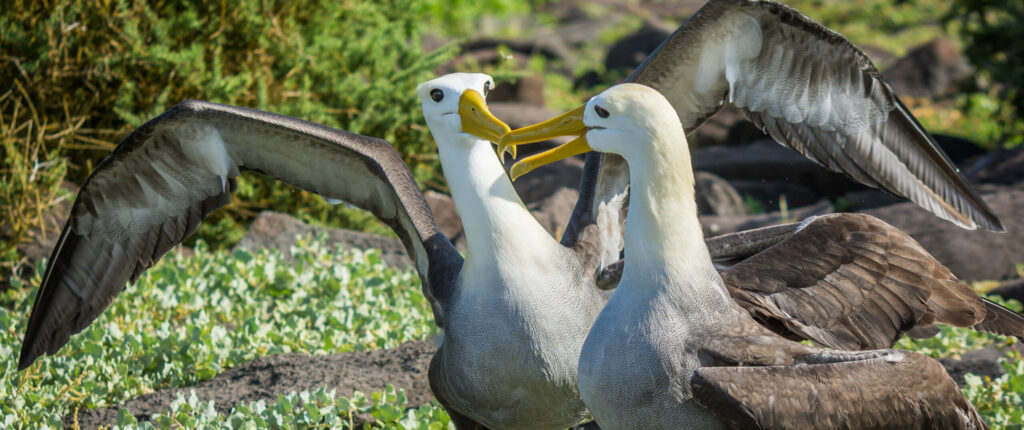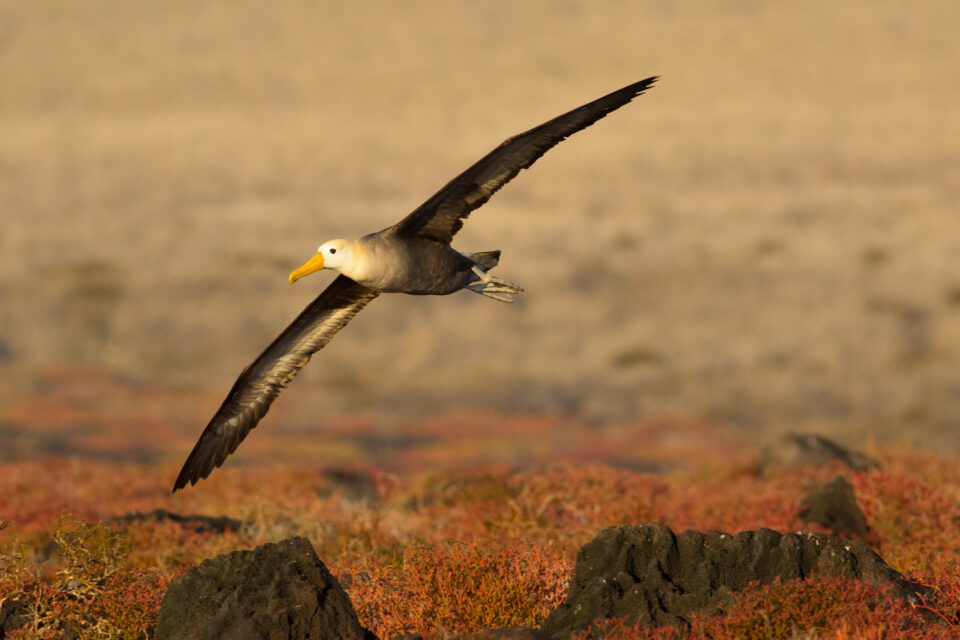
Island overview
Española is an eroded remnant of a large volcanic eruption, though the volcano is now extinct. The island was created when the eruption split a hole in the tectonic plates, allowing what is now Española to float away from the Galapagos hotspot.
Española has never been inhabited by humans, and the whole of its south shore is a low cliff, which is the key nesting site for the waved albatross. Española mockingbirds, lava lizards and tortoises evolved into distinct, endemic species on this isolated island.
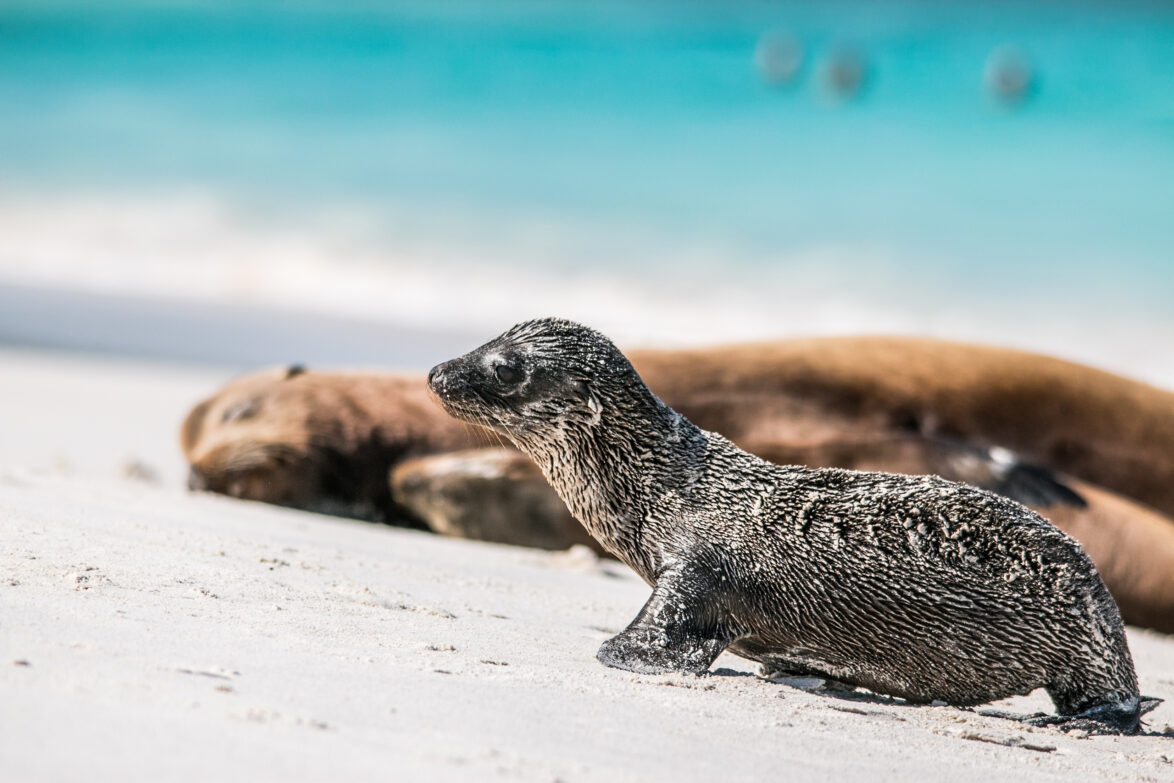
One of the island’s most popular visitor sites, the Punta Suarez walking trail, is a good place to see sea lion pups, which are often found playing in the shallow water, waiting for their mothers to return with food. During the breeding season, male marine iguanas on Española have a strong red and green colouration and can be seen catching rays on the rocks. Their impressive colours have earned them the nickname the ‘Christmas iguana’. The highlight of the island, however, is the waved albatross. The albatrosses leave the island in January and February and return during the nesting season between April and December.
Diving on Española is confined to Isla Gardner and Bahia Gardner. The Isla Gardner dive site is a mini wall with a sandy bottom, lava tunnels and caves. The currents are usually moderate, but when they get stronger, there is a chance of encountering fish such as rays, sharks and even hammerheads. Bahia Gardner usually has a moderate current, which makes for relatively easy diving. Divers can encounter schools of eagle rays, manta rays, Galapagos sharks, whitetip reef sharks, mackerels and sea lions.
Wildlife highlights

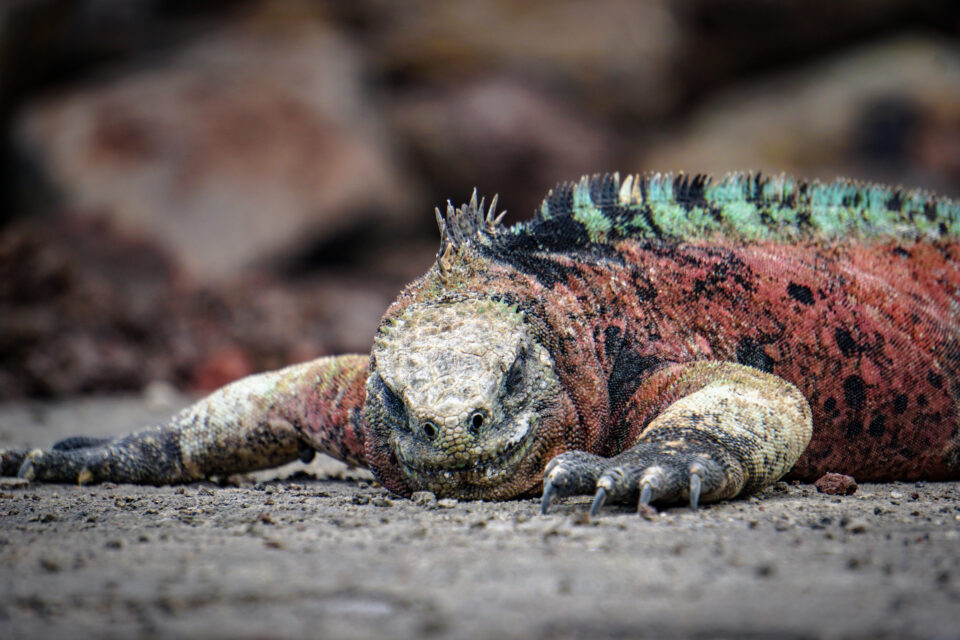
Marine iguana
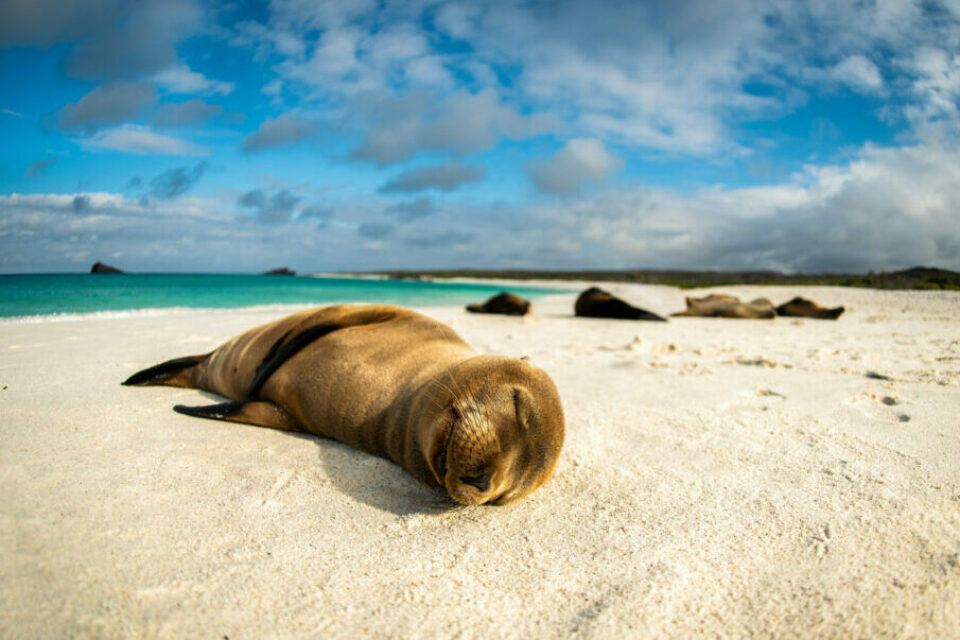
Galapagos sea lion
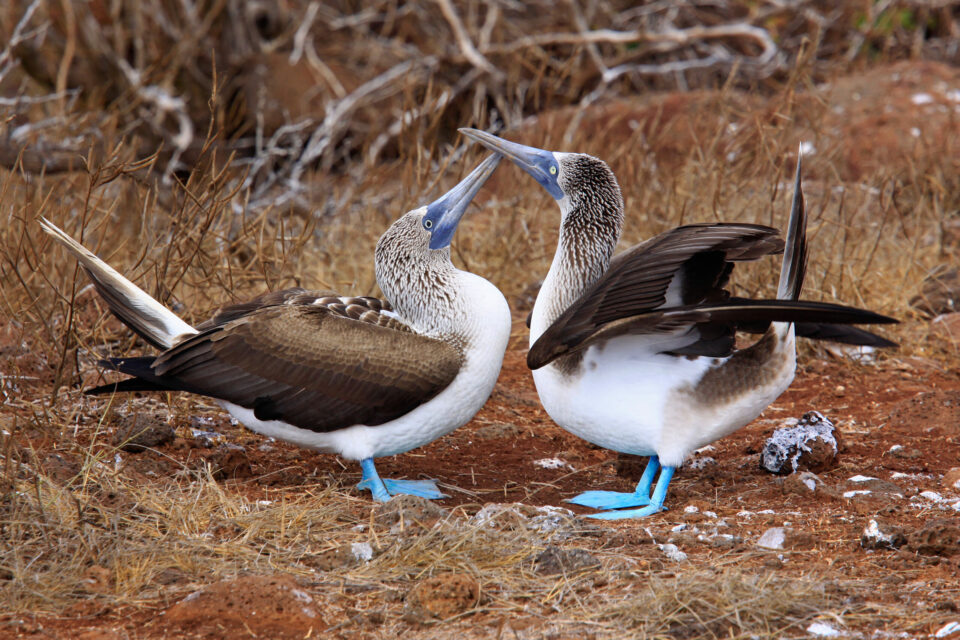
Blue-footed booby
Conservation challenges
Humans exploited Española giant tortoises as a food source during the 18th and 19th centuries, and by the 1960s there were just 14 tortoises left, but a successful breeding programme has led to a remarkable recovery. The Charles Darwin Foundation and Galapagos National Park have since released nearly 2,000 young tortoises back onto Española where they have been thriving for the last thirty years. Feral goats were eradicated from Española in 1978 and the re-introduced population of tortoises re-established their roles as key herbivorous gardeners. Current conservation efforts on the island are aimed at ensuring the restoration of the cactus forests that existed before the presence of goats.
Española’s most famous residents, the waved albatrosses, also face a number of challenges. With such a confined breeding range and threats including long line fishing outside of the Galapagos Marine Reserve, climate change, oil spills and potentially plastic pollution, the waved albatross is listed as Critically Endangered on the International Union for Conservation of Nature (IUCN) Red List. Some colonies have also been lost as result of herbivorous tortoise declines, as vegetation has regrown and taken over the bare rocks, leading to the desertion of eggs.
